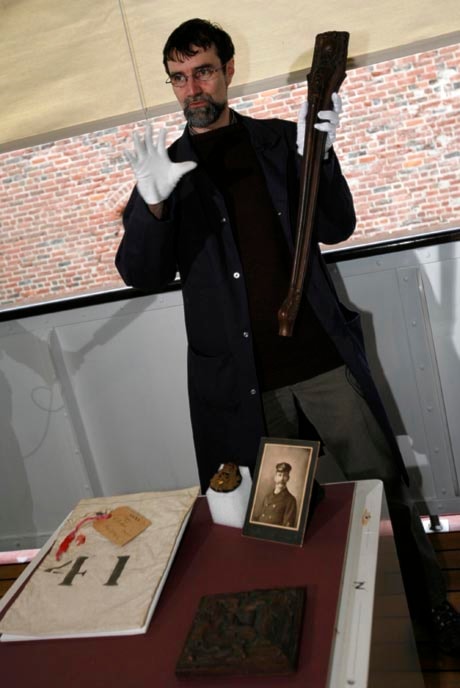HALIFAX — A rosette fashioned from splintered pieces of the Titanic’s grand staircase and a simple canvas bag used to transport one man’s belongings to his grieving widow were unveiled Tuesday in Halifax, where 150 victims of the infamous maritime disaster are buried.
The items, which were acquired in October from an auction in England, have been placed on display at the Maritime Museum of the Atlantic — 97 years after the ill-fated luxury liner sank to the bottom of the North Atlantic.
“Halifax is a real centre of the grim reality of the sinking,” said Dan Conlin, a historian with the waterfront museum.
More than 1,500 crew and passengers died when the so-called unsinkable ship went down on April 15, 1912, after striking an iceberg southeast of Newfoundland.
Among the doomed ship’s victims was Edmund Stone, a 33-year-old first-class bedroom steward. After the sinking, Stone, who was buried at sea, was known simply as Body No. 41. The mortuary bag placed on display Tuesday had been used to safeguard the young man’s belongings — a pocket watch and a receipt from a pawn shop, among a few other items.
